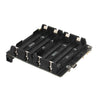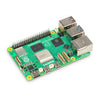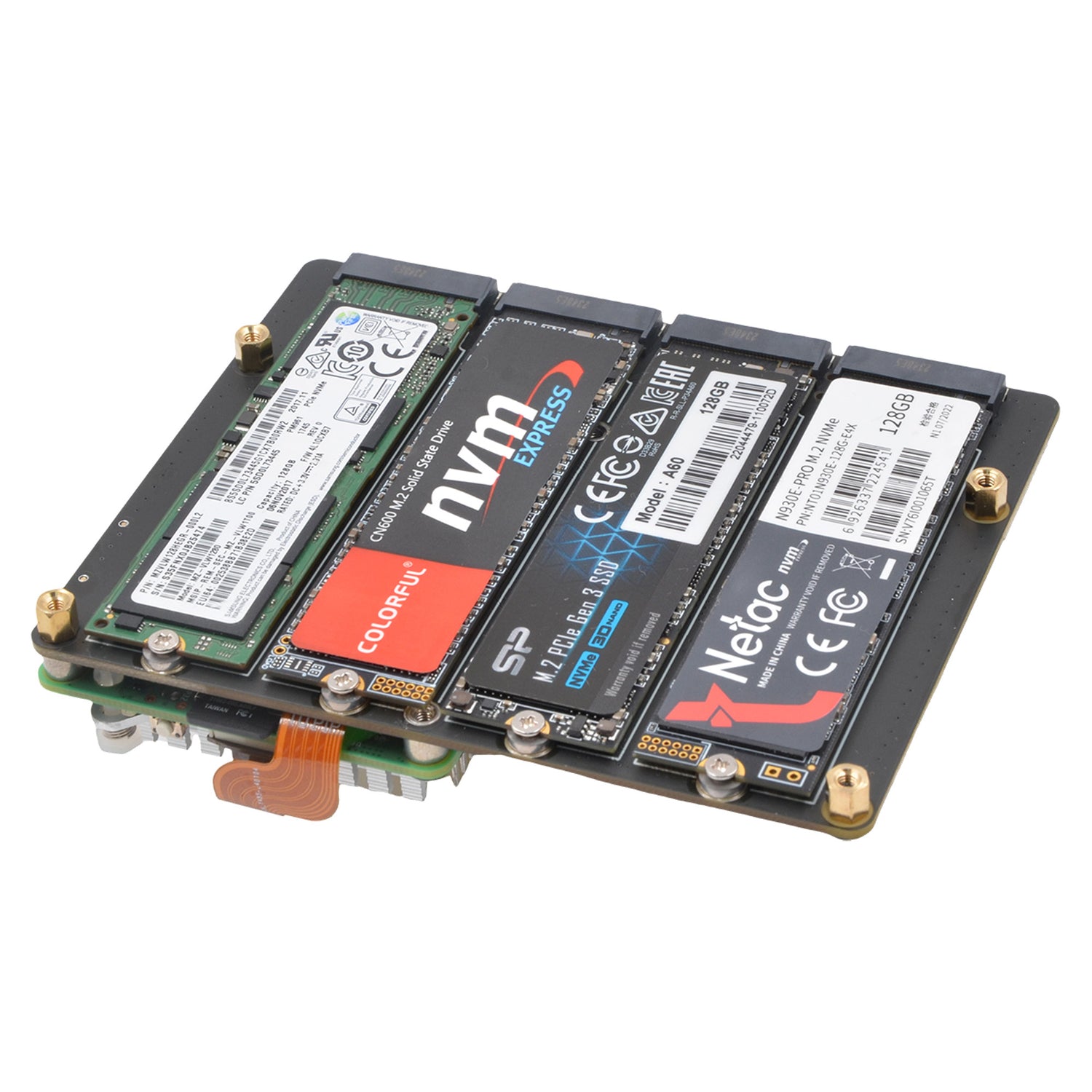Compared with the previous Raspberry Pi generations, the new launched Raspberry Pi 4 brings many improvements: a more powerful CPU and GPU, larger memory, and support for Gigabit Ethernet and USB 3.0. However, more powerful performance and processing power means more power consumption, so the Raspberry Pi 4 is the most power-consuming and heat-prone one in this Raspberry Pi series.

Geekworm design this Raspberry Pi 4 Model B embedded armor aluminum alloy heatsink to slove Pi 4 excessive heat generation problem when use Raspberry Pi 4 Model B with its expansion board. This heatsink can also be used with a cooling fan above.

The Embedded Armor Aluminum Alloy Heatsink Radiator is 7mm high (designed with negative tolerance) and is equipped with M2.5*5+5 copper spacers; so the total height is 12mm, which can support most of Raspberry Pi 4 expansion boards; if you use expansion board with other height, you only need to replace the copper spacers with the right height.

The official has been continuously optimizing this issue. The firmware update recently released has finally made a breakthrough in improving power consumption. This firmware update includes USB controller, SDRAM, and VLI power management. You can refer to here for the official blog: https://www.raspberrypi.org/blog/thermal-testing-raspberry-pi-4/
According to the official introduction, the Raspberry Pi 4 upgraded to Raspberry Pi 4 Beta firmware brings many improvements, including finer control of the SoC operating voltage and timing optimization for the HDMI video state machine. The upgrade method is as follows:
To upgrade your Raspberry Pi to the latest firmware, open a Terminal window and enter:
sudo apt updatesudo apt full-upgrade
Now restart Raspberry Pi using:
sudo shutdown - r now
Beta firmware reduces overall power consumption by reducing idle power consumption, while adjusting SoC voltage to reduce power consumption at load without affecting performance. The end result is that the power consumption is reduced to 2.1W at idle and 6.41W at load, which is also the best data so far. Reduced energy consumption also means reduced heat production and improved heat dissipation, so the system does not need Thermal Throttling to be “full power”.
Thermal Imaging

Power Draw

It can be seen that upgrading to the latest firmware will effectively reduce power consumption and improve heat dissipation.
Finally, the official also introduced an operation that can effectively dissipate heat by adjust the orientation of the Raspberry Pi 4, as shown below:

Firmware upgrades offer great gains, but what about putting Raspberry Pi on its side?
The arrangement in the picture is to place the Raspberry Pi 4 with Beta firmware installed upright, the GPIO PIN is at the bottom, and the power and HDMI interfaces are at the top. Since upright placement can improve convection and allow the surrounding air to absorb heat faster, while lifting the back of the board from an insulated table top, greatly increasing the available cooling surface area, the heat dissipation effect is naturally better than flat placement.









